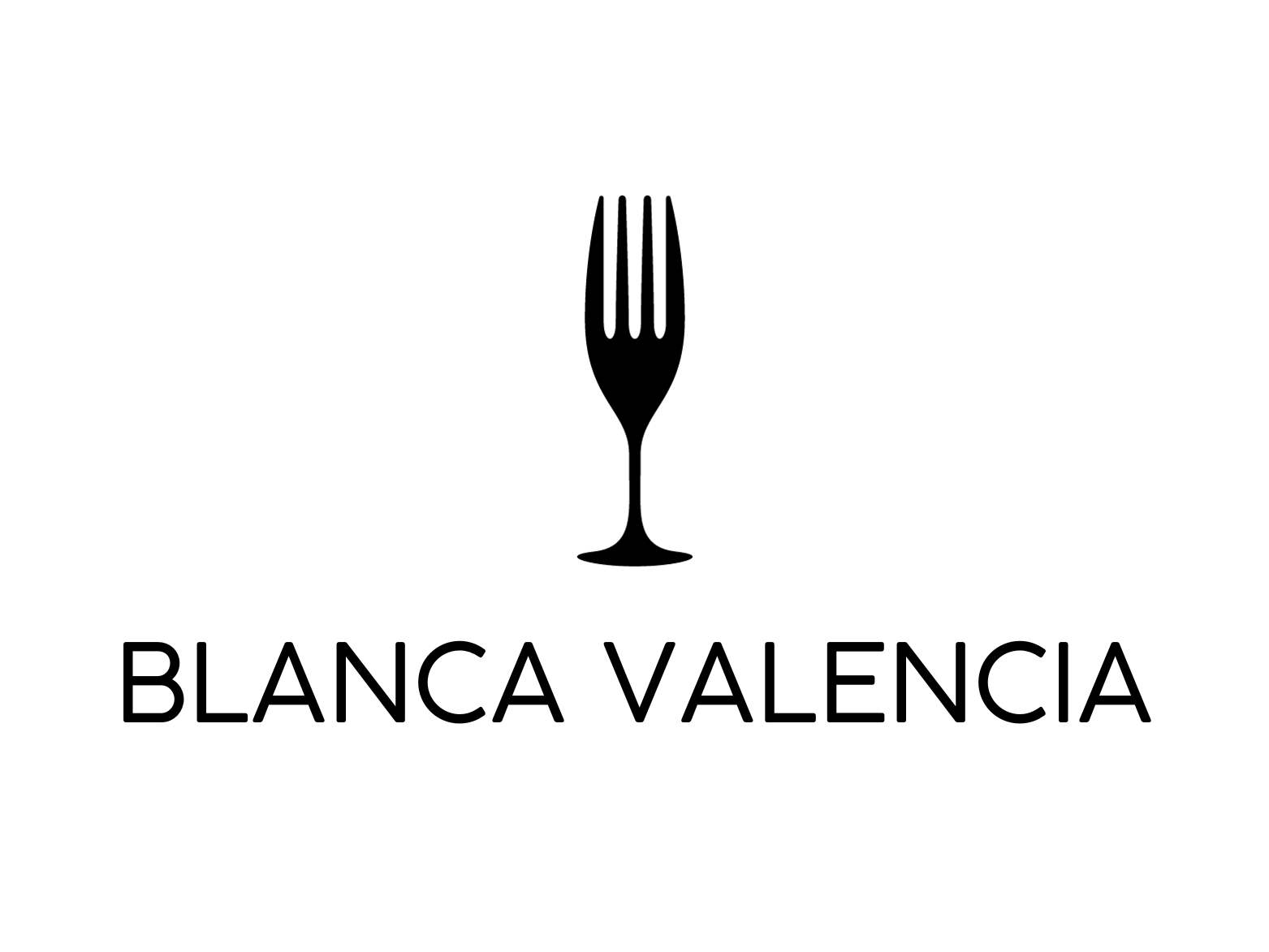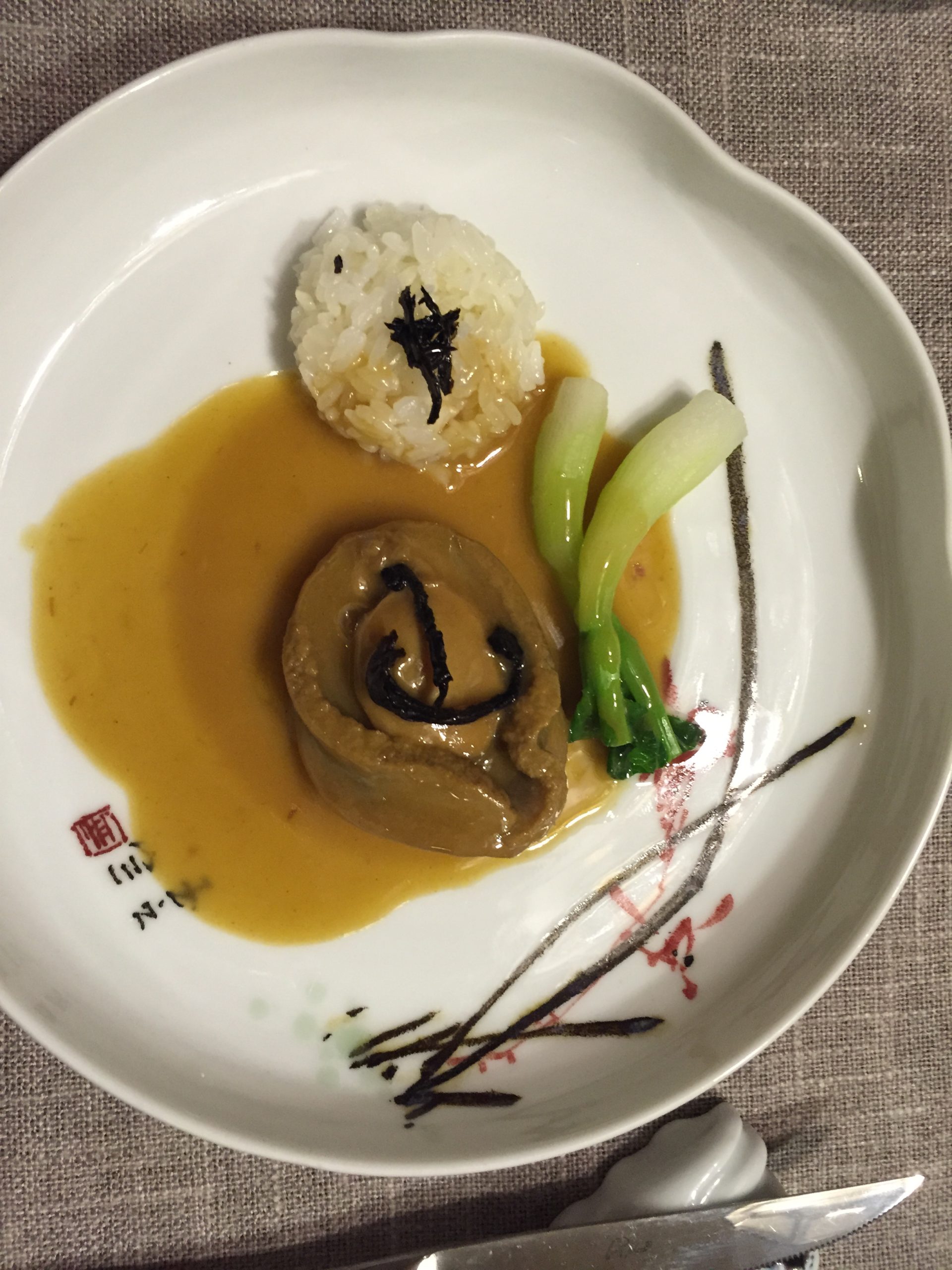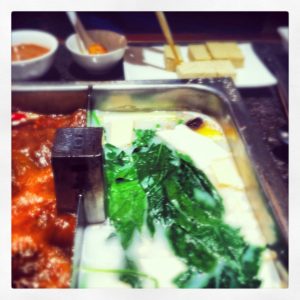The fact that you can get a last minute reservation at Yu Zhi Lan must be one of the abnormalities of the fine dining world. But then in China things don’t work as Westerners expect, and food and restaurants are no different. We were in Chengdu on holiday to experience tea culture, Sichuanese food and of course to see the pandas, when I remembered that Fuchsia Dunlop had recommended a fine dining restaurant in Chengdu in an article in the FT. By fine dining she meant Chinese restaurants that adapt to the stringent requirements of Western style fine dining. There are plenty of fine (very fine) dining restaurants in China thank you very much. I looked it up called and booked a table for that evening. Obviously readers of the FT don’t venture as far as Sichuan or are not interested in restaurants that serve Chinese food in western-like way and setting.
This restaurant is anathema to the main caveat of Chinese dining where food is served at the same time and not sequentially. It used to be called “a la francaise” but now people use the term “family-style” (an expression that is super abused in restaurants where they can’t get their timings right) . The chef was inspired by visits to the French Laundry in Napa and wanted to recreate that experience of having individual servings (!) brought in order which the Chinese frankly don’t care for.
Steve and I got in a cab and where greeted by a black wooden door in a nondescript residential neighborhood. The restaurant was empty at the time of our arrival. We were given a xiao baofang or small private room (in this sense it’s very Chinese since they like their private rooms). The room was tastefully decorated but the lighting was off, too white and too direct. The room had a window in to an inner courtyard of the residential complex. There were two tables in the baofang. One small table was set with cups of raw pu’er*, a medicinal like tea, and a bowl of herbal jelly with tapioca. A larger one, was obviously set for the main meal.
They had a long western wine menu so we decided to order some red wine, although we were not sure if it would enhance or detract from the meal. I tend to drink beer with Chinese food but do find some whites match perfectly (prices permitting, since wines are heavily taxed in China).
While we drank our pu’er and ate the herbal jelly the waitress set the main table with a huge array of appetisers. Tea tree mushrooms, cashews with Sichuan pepper, rose with lily bulbs, bamboo with roasted green chile, beef shank and delicious fresh black berries.
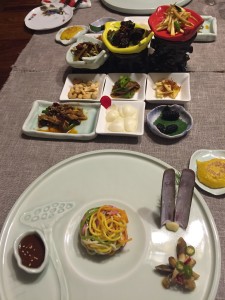 It was all delicious and intriguing but confused in the sense that it was all served at once. Although I find long menus and pontificating snobby waiters exhausting, this was for my liking too compressed. So much history, hard work thrown in one go maybe it should have be less dishes.
It was all delicious and intriguing but confused in the sense that it was all served at once. Although I find long menus and pontificating snobby waiters exhausting, this was for my liking too compressed. So much history, hard work thrown in one go maybe it should have be less dishes.
After these appetisers came a long, long parade of dishes. A showcase of some of the dishes Chinese love and westerners love to hate like sea cucumber, abalone, bird’s nest egg and others more recognisable and approachable like dumplings, miniature egg noodles, okra, matsukase mushroom and green eggplant. I was most impressed with the abalone which was cooked to perfection and the matsukase stew and by the selection of crockery.
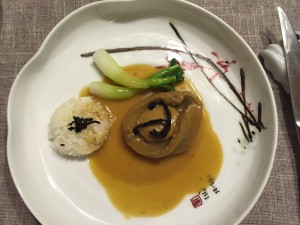
Abalone

Mastsukase
Although the experience felt like “fine dining” I missed the hustle and bustle of a normal restaurant. Although we could hear other dinners in other baofangs we did not get to see anyone. I would transport this restaurant to a busy neighbourhood in Shanghai with a main dining room full of young professional Chinese, tourists and expats. Also I truly believe that because of long convoluted historical reasons Chinese food is unknown and under-appreciated and that we should pay more attention to what and how they cook and serve and not exclusively vice-versa. I would say to chef Lan Guijun that his food is fantastic and shows amazing dexterity no matter how it’s served.
